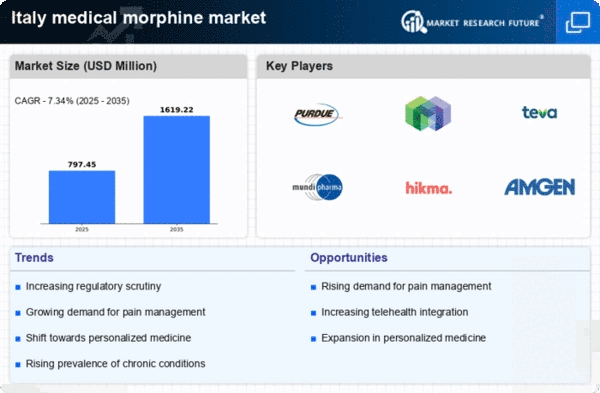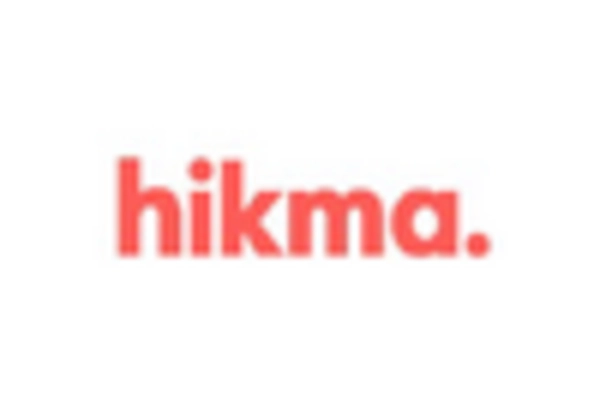Impact of Health Insurance Coverage
Health insurance coverage plays a crucial role in shaping the medical morphine market in Italy. With a significant portion of the population covered by public health insurance, patients have greater access to necessary medications, including morphine. This accessibility is vital for individuals suffering from severe pain, as it reduces the financial burden associated with opioid prescriptions. Recent data indicates that approximately 80% of morphine prescriptions are covered by health insurance, which encourages healthcare providers to prescribe these medications more freely. Consequently, the medical morphine market is likely to see sustained growth, as insurance coverage facilitates patient access to morphine, potentially leading to a 12% increase in market size over the next few years.
Growing Awareness of Palliative Care
The growing awareness of palliative care in Italy is contributing to the expansion of the medical morphine market. Palliative care focuses on providing relief from the symptoms and stress of serious illnesses, and morphine is a key component in managing pain for patients in these settings. As healthcare providers and families become more informed about the benefits of palliative care, the demand for morphine is likely to rise. Recent surveys indicate that nearly 30% of patients receiving palliative care in Italy are prescribed morphine, highlighting its importance in treatment plans. This trend suggests that the medical morphine market will continue to grow as more healthcare facilities integrate palliative care into their services, potentially increasing morphine prescriptions by 15% in the coming years.
Advancements in Pain Management Protocols
The medical morphine market is also influenced by advancements in pain management protocols within the healthcare system in Italy. Healthcare professionals are increasingly adopting evidence-based practices that incorporate opioids as a primary treatment option for severe pain. This shift is supported by clinical guidelines that recommend the use of morphine for patients who do not respond to non-opioid analgesics. As a result, hospitals and clinics are more likely to prescribe morphine, contributing to a projected growth rate of 5% in the medical morphine market over the next five years. Additionally, educational initiatives aimed at training healthcare providers on the safe and effective use of opioids are further enhancing the acceptance of morphine in pain management, thereby solidifying its role in the medical morphine market.
Regulatory Support for Opioid Prescriptions
Regulatory support for opioid prescriptions is a significant driver of the medical morphine market in Italy. The Italian government has implemented policies that facilitate the prescription of opioids for pain management, ensuring that patients have access to necessary medications. This regulatory framework includes streamlined processes for obtaining prescriptions and monitoring usage to prevent misuse. As a result, the medical morphine market is likely to benefit from increased accessibility and acceptance of morphine as a treatment option. Furthermore, the government’s commitment to addressing pain management as a public health priority suggests that the medical morphine market will continue to expand, with an anticipated increase in prescriptions by 10% over the next few years.
Increasing Prevalence of Chronic Pain Conditions
The medical morphine market in Italy is experiencing growth due to the rising prevalence of chronic pain conditions among the population. Conditions such as arthritis, cancer, and neuropathic pain are becoming more common, leading to an increased demand for effective pain management solutions. According to recent health statistics, approximately 20% of the Italian population suffers from chronic pain, which necessitates the use of opioids like morphine for relief. This trend indicates a potential expansion in the medical morphine market, as healthcare providers seek to address the needs of patients requiring long-term pain management. Furthermore, the aging population in Italy, which is projected to reach 35% of the total population by 2030, is likely to exacerbate this demand, thereby driving growth in the medical morphine market.

















Leave a Comment